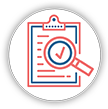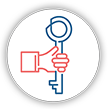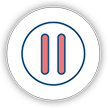
Nurse educators are responsible for developing graduate nurses who are prepared to recognize and respond to changes in a patient’s condition. Because nursing education continues to struggle to implement needed change, we are preparing graduate nurses who may be able to pass NCLEX, but are not prepared for the complexities of current practice, including nursing shortages that lead to higher workloads and patients with higher acuity.
As you review your clinical paperwork and teaching strategies used to develop clinical judgment, reflect and determine what you are preparing them for; real-world clinical practice or completing page after page of clinical paperwork.
Academic Practice Gap
The persistent gap between how nursing is taught and practiced has been documented for almost fifty years and has widened due to COVID. It is time for nurse educators to wake up and accept the reality that nursing has changed, and nursing education must catch up and be willing to change, or nothing will change.
Nursing education must do what is needed to close the academic practice gap because most graduate nurses are not ready for practice (Kavanaugh & Sharpnack, 2021). As a result, patients are at risk, and new nurses are leaving the profession at higher rates than ever.
Nursing is different with numerous challenges since the COVID pandemic, but nursing education has not changed and as result, graduate nurses struggle to transition successfully to real-world practice. These nurses fail to recognize and respond to critical issues leading to adverse outcomes. We are losing ground on clinical competency rather than making gains (Kavanagh & Szweda, 2017).
Entry-level nurses recognize the education-to-practice gap exists and want change (Hallaran, Edge, Almost, Tregunno, 2023). Many institutions are still using the same multiple page care plans for clinical from when the instructors themselves went to nursing school. Educators are tasked with remaining current with best practices and finding innovative ways to facilitate education to a new technology-savvy generation motivated differently.
Bringing Classroom to Clinical
Bringing clinical into the classroom is a significant step in improving clinical judgment. Still, we must also expect the application of classroom concepts at the bedside and assess it through performance metrics instead of paper-writing skills. It is not enough to memorize a chart in the book or master test-taking strategies.
Patients are not charts and do not have multiple choices over their heads to select from as a nurse enters the room. Therefore nurse educators must emphasize the performance of clinical judgment to ensure practice readiness.
Clinical paperwork does not demonstrate the ability to recognize or demonstrate the ability to respond to changing clinical conditions. Entry-level nurses enter practice at the advanced beginner stage of Benner’s Stages of Clinical Competence because they lack experience (Petiprin, 2023).
Make the clinical environment like practice so decision-making can occur and clinical judgment can be developed. This is done by using a Socratic approach of asking the right clinical reasoning questions as an oral care plan to ensure that your students can think on their feet just as a nurse must do in practice.
Tanner’s Model of clinical judgment is used in the classroom for teaching judgment but assessing if the student can translate these concepts in the clinical setting is lacking (Tanner, 2006).
My Story
As a nurse working at the bedside, I see the nurses entering the profession firsthand, and I often have to orient them to the units. Students pass their NCLEX and can tell you what to do when you ask a question but cannot recognize the problems arising or react to them.
My epiphany came when a nursing student cared for a very low-sodium patient in their final semester. On their own, they did not recognize the problem. Still, when I asked them what you do with low sodium, she could readily reply with seizure precautions yet could not compute that the patient with sodium around 110 was hyponatremic and failed to place them into the appropriate precautions during clinical.
When the student submitted their clinical paperwork 48 hours later, they indicated that the patient was hyponatremic, and interventions like padding the bedrails were indicated. Still, they did not implement the interventions at clinical. It was at this very moment that I realized something needed to change.
As a paramedic and firefighter, our clinical was performance-oriented, not paperwork, so why is this not the case with how we teach clinical?
Emphasizing performance, not paperwork
To make needed changes to better prepare my students for practice, I relied on the techniques used in firefighting and paramedic education combined with applying Tanner’s Model of Clinical Judgment. Teach the clinical in the classroom and then assess the application in practice; flip it.
The simulation lab was the first point of change by having the student manage issues in their entirety. For example, if the pump was beeping, they had to figure it out, not just ignore it. This helped them to see how long it takes to work through a situation and supports the need to think, prioritize, respond, and delegate.
Next, we reflected on the purpose of clinical paperwork and concluded the paperwork was time away from patient care, giving an unrealistic picture of the student’s judgment. Our entire nursing program streamlined clinical paperwork from four pages in the first semester to zero in the final semester. Students are now graded on performance rather than paperwork.
Next Steps
Implementation is more straightforward than one might think because the buy-in from students and instructors was overwhelmingly positive. The outside rotation, which once was a day to attend another unit, was changed to a lead nurse role so the instructor could spend more time working with each student individually on SBAR, disease process, reviewing the H&P’s, and understanding labs and medications.
Oral Careplan Process
The oral care plan is a systematic process to help both the student and the faculty to know what to expect each day. The beginning of the day begins, as any nurse does, by reviewing the chart including the H&P, labs, meds, notes, and orders.
The first questions start when preparing to administer medications. The students are asked why the patient is receiving the medication, the mechanism of action, what specific labs and vitals are important to review (actual values expected), side effects and how to evaluate the effectiveness.
After med administration, the faculty begin working with each student individually in roughly 10-15 minute increments. The students are asked to provide an SBAR on their patient. From this SBAR, the faculty will ask about the important labs (normal and abnormal) based on the priority problems identified, important assessment needs, and anything from the H&P that will make this patient’s situation more complicated.
The student will discuss the vital trends and provide their plan of care for the patient including any precautions needed/implemented. Once the instructor has seen each student, they round on the students again for the other patient. Finally, the instructor will conclude the day by having the student provide an oral reflection on both patients to determine if the plan of care was effective.
Lunches are done using partners. The student must report to another student using SBAR communication to ensure each patient is provided care. Once the student returns from lunch and reassesses their assigned patients, the other student reports to them so they can take their break.
Clinical Reasoning Questions for Oral Care Plan
After the student provides an SBAR, ask specific questions during clinical for each patient.
1. What did you notice about your assessment, vital signs and labs today?
2. How do you interpret the findings of the labs, vital signs, H&P, and current condition?
* Explain what is happening in the body that explains these findings (patho).
3. How do the current treatments (including meds) prescribed address the priority problems?
* What concerns do you have about the current treatments?
* How will you assess these concerns?
* How will you evaluate the effectiveness?
4. Have you or do you need to respond to any of the assessment findings, vitals, labs, treatments, or other considerations?
* Any specialty or provider collaboration needed.
* What has been delegated, to whom, and what follow-up has been done or needed?
5. For your plan of care, what focused assessments are most important to follow up on, and what would alert you that the patient is either improving or declining based on the current situation?
6. Have you or anyone implemented any safety precautions on the patient, why or why not?
7. Reflect on the impact you made on your patient today. What have you done to get them closer to their goal and optimal health? (This should include patient education.)
8. What would you do differently if you started your day over again?
Post Conference Priorities
In post-conference, the lead student discusses some of the challenges noted on the unit and prioritizes the entire group of patients as if they were a charge nurse. The peers evaluate how the lead student supported them throughout the day and offers additional thoughts to consider in the future.
Each student discusses at least one strength and opportunity about themselves. Finally, the faculty are given weekly “what if” scenarios to discuss what they would do in the situation based on their actual day. An example is calling a provider on the ”what if” scenario and they actually practice the call with the faculty while the students evaluate.
Helpful tips were found during this process. To optimize the success of this process, one student is assigned to the lead role which quizzes students prior to the instructor and helps connect information. By having the students collaborate on the issues and put pieces together, both students enhance their critical thinking, and the time for the instructor is much more productive. The following significant change was medication administration.
The instructor passes meds with half the students in the morning and the other half in the afternoon to allow more time to assess critical thinking and assessment of the education provided to the patient during administration. These changes have allowed the student more time to think by reducing the time spent writing down information for homework. Before leaving the clinical for the day, the students are provided immediate feedback and made aware of their performance and any performance indicators that were not met.
What additional questions from Tanner’s Clinical Judgment Model can you start asking your students in clinical to begin an oral care planning process in your clinical?
Recommended Resources
ARTICLE: Tanner’s Model of Clinical Judgment-Thinking Like a Nurse: A Research-Based Model of Clinical Judgment in Nursing
Let the classroom teach the elements of clinical judgment and allow the clinical to demonstrate its application.
Closing Thoughts
Students need to demonstrate the application of nursing at the bedside and not just be good at tests and clinical paperwork. The integration of clinical judgment involves changing our practice in the clinical setting to create more practice-ready nurses.
Nurse educators are responsible for putting safe practicing clinicians at the bedside. Nursing practice has changed, and so must we. Assess clinical judgment through the art of practice rather than the art of clinical paperwork.
How many pages is your current clinical paperwork? What content can be removed to use as an oral care planning process instead?
References
- Hallaran AJ, Edge DS, Almost J, Tregunno D., (2023). New Nurses’ Perceptions on Transition to Practice: A Thematic Analysis. Canadian Journal of Nursing Research. 55(1):126-136. doi:10.1177/08445621221074872
- Kavanagh, J.M., Sharpnack, P.A., (January 2021) Crisis in Competency: A Defining Moment in Nursing Education. OJIN: The Online Journal of Issues in Nursing Vol. 26, No. 1, Manuscript 2.
- Kavanagh, J. M., & Szweda, C. (2017). A Crisis in Competency: The Strategic and Ethical Imperative to Assessing New Graduate Nurses’ Clinical Reasoning. Nursing Education Perspectives, 38(2), 57-62. doi:10.1097/01.NEP.0000000000000112
- Peptimin, A., (2023). Nursing Theory: From Novice to Expert. https://nursing-theory.org/theories-and-models/from-novice-to-expert.php
- Tanner C. Thinking Like a Nurse: A Research-based Model of Clinical Judgment in Nursing. J Nurs Educ. 2006 Jun;45(6):204-11. doi: 10.3928/01484834-20060601-04
Bethany Corner, DNP, MBA, RN, AAS, CNE, is the Director of Nursing & Full-Time Nursing Faculty for the Mid Michigan College, teaching medical-surgical, emergent, and critical care content for an ADN program. Beth began her career as a firefighter/paramedic until completing her associate degree in nursing in 2011.
She started in the neuro-medical step-down unit and moved to the medical intensive care unit (MICU). While working in the hospital, Beth often precepts nursing students and orients entry-level nurses into practice, allowing for a current assessment and trend of nursing education versus readiness for nursing practice. This served as the catalyst for change.
While obtaining her DNP and CNE, Beth worked to redesign her classroom delivery to teach application and critical thinking rather than expecting it. She uses her experiences from her firefighter/paramedic education and research from Benner and Tanner’s Model to support nursing education by bringing patients into the classroom and classroom expectations into clinical.
Contact: bcorner@midmich.edu
The Ultimate Solution to Develop Clinical Judgment Skills
KeithRN’s Think Like a Nurse Membership
Access exclusive active learning resources for faculty and students, including KeithRN Case Studies, making it your go-to resource.
Sign up to receive a free KeithRN NextGen Case Study!
Develop clinical judgment skills with this innovative new case study on asthma to prepare your students for NextGen NCLEX and practice!
The Ultimate Solution to Develop Clinical Judgment Skills
KeithRN’s Think Like a Nurse Membership
Access exclusive active learning resources for faculty and students, including KeithRN Case Studies, making it your go-to resource.






